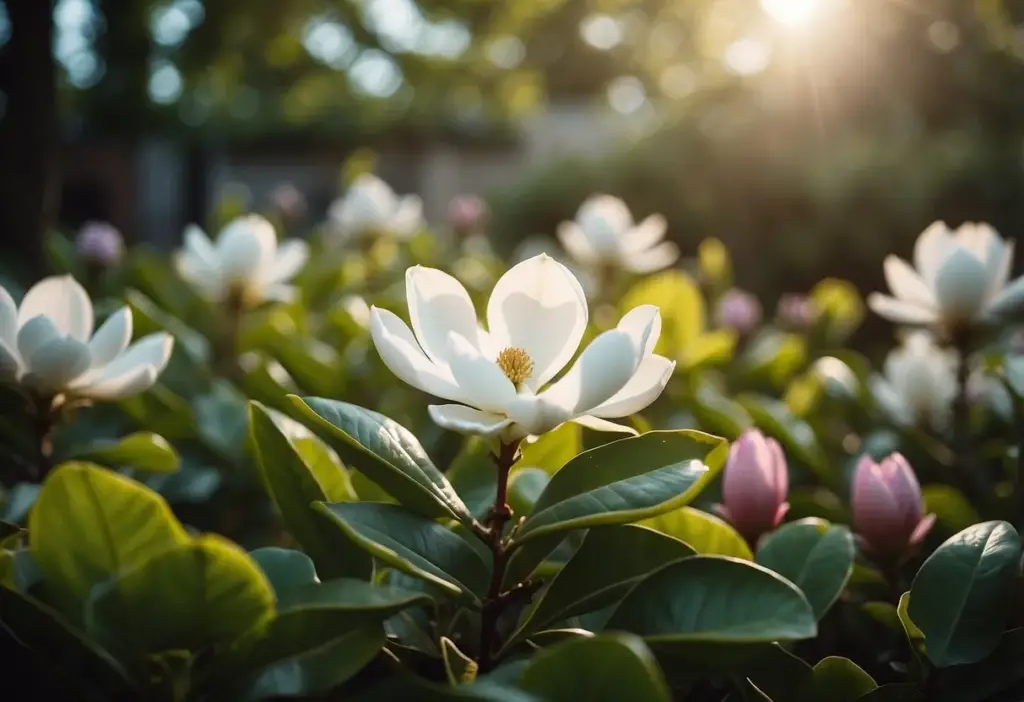
Garden enthusiasts who want to add beauty and charm to their outdoor settings often choose the Little Gem Magnolia. It is perfect for tiny gardens or as a focus point in bigger landscapes because of its petite size and lovely evergreen foliage. The tree provides year-round visual interest with its gorgeous blossoms and thick green leaves.
How can you utilize this adaptable plant to its fullest potential in your yard? The Little Gem Magnolia can be used for a variety of tasks, including adding curb appeal and shade. You can see how adding this tree can result in beautiful and useful garden plans with a little bit of forethought.
Plant in Full Sun
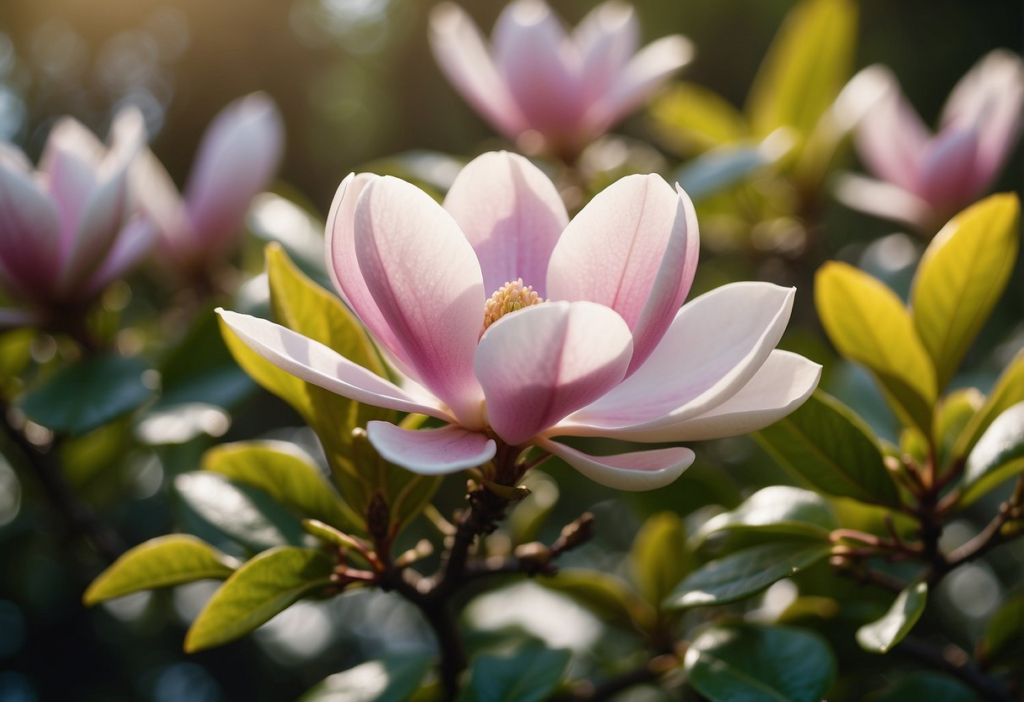
To ensure optimal growth for your Little Gem Magnolia, plant it in full sun. This tree thrives on abundant sunlight, which is essential for its vigorous development.
Choose a location in your garden where the magnolia won’t be overshadowed by structures or taller plants. This allows it to bask in direct sunlight, promoting a strong, healthy tree.
Full sun exposure will also enhance the vibrancy of the magnolia’s blooms, making your garden a stunning showcase of bright, beautiful flowers throughout the growing season.
Use Well-Drained Soil
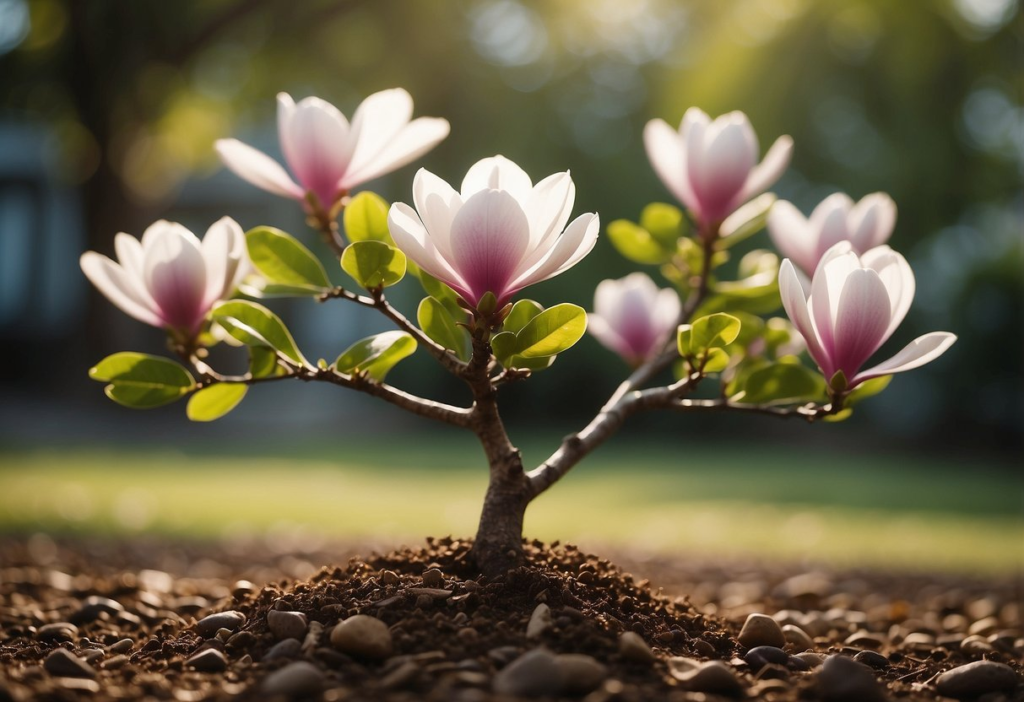
For a healthy Little Gem Magnolia, well-drained soil is crucial. This type of soil prevents water from accumulating around the roots, which can lead to root rot.
Ensure that your garden soil allows for quick drainage. Test the drainage by filling a hole with water and observing how quickly it disappears. If the water drains within 15 minutes, your soil is ideal.
Incorporate organic matter like compost to enhance soil drainage and nutrient content. This will create a thriving environment for your magnolia, leading to a vibrant and robust tree.
Regularly Prune
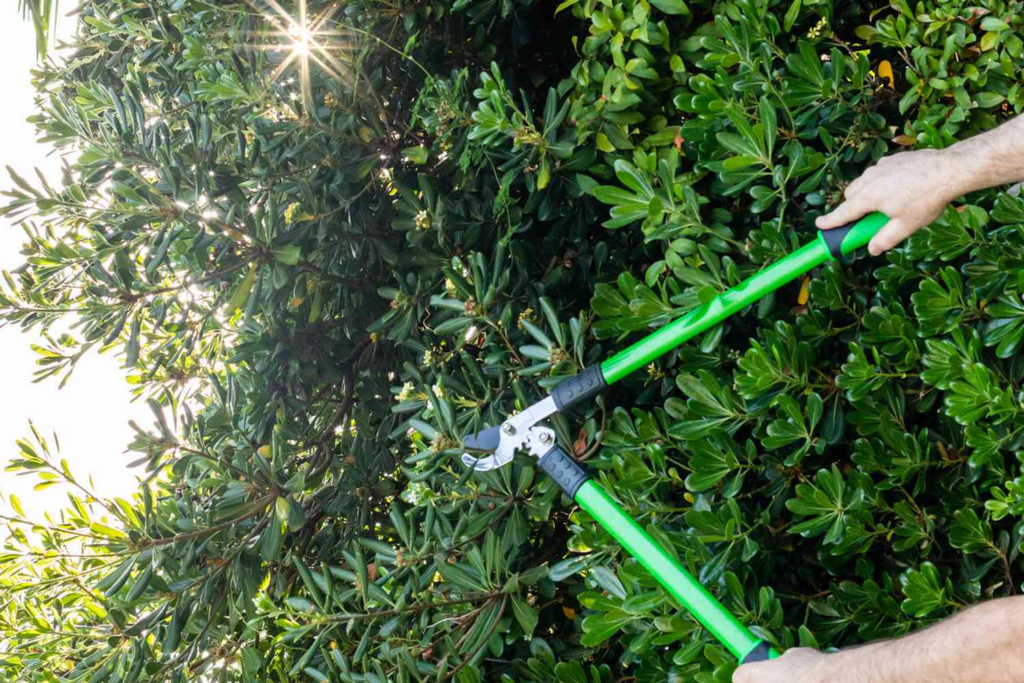
To maintain the health and appearance of your Little Gem Magnolia, regular pruning is essential. Perform pruning in early spring to shape the tree and remove any dead or damaged branches.
Use sharp bypass pruners for small branches and loppers for larger ones. Disinfect your tools before use to prevent disease spread.
Removing damaged or dead branches improves airflow and supports healthy growth. Consistent pruning ensures your Little Gem Magnolia remains lush and attractive throughout the year.
Add Mulch for Moisture
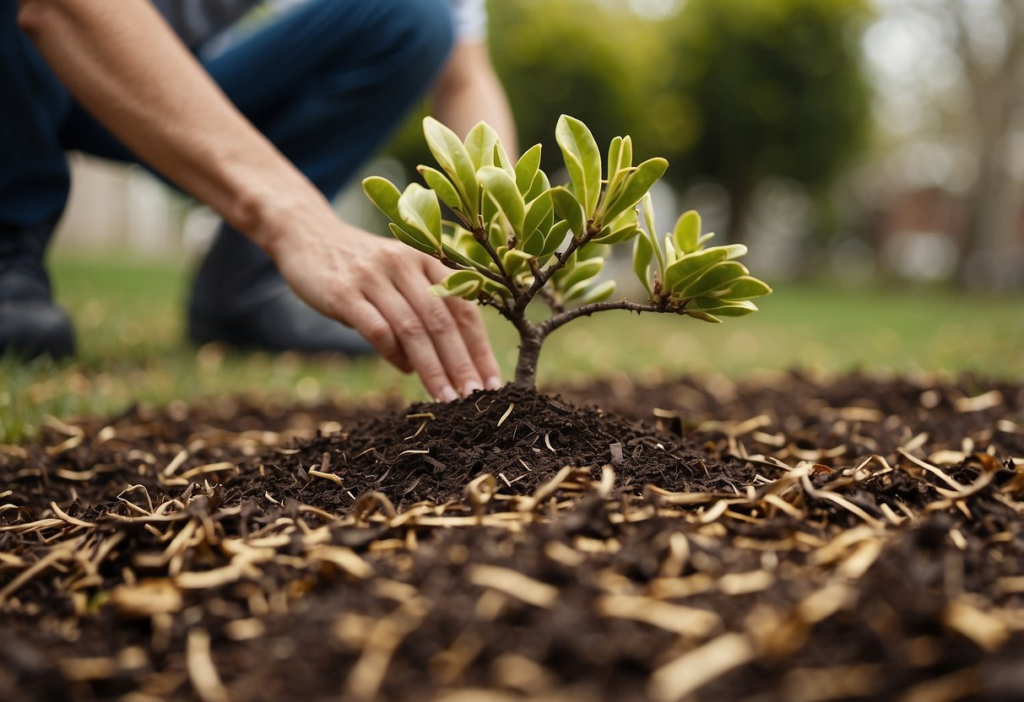
Applying mulch around your Little Gem Magnolia helps retain soil moisture and regulate temperature. Use organic mulch, such as wood chips or bark, spread about 2 to 4 inches thick.
Avoid piling mulch against the tree’s trunk to prevent rot and pest issues. Instead, spread it evenly around the base of the tree.
Apply mulch in early spring to provide a stable environment for your magnolia as it begins its growing season, promoting a healthier and more resilient tree.
Use Composted Manure
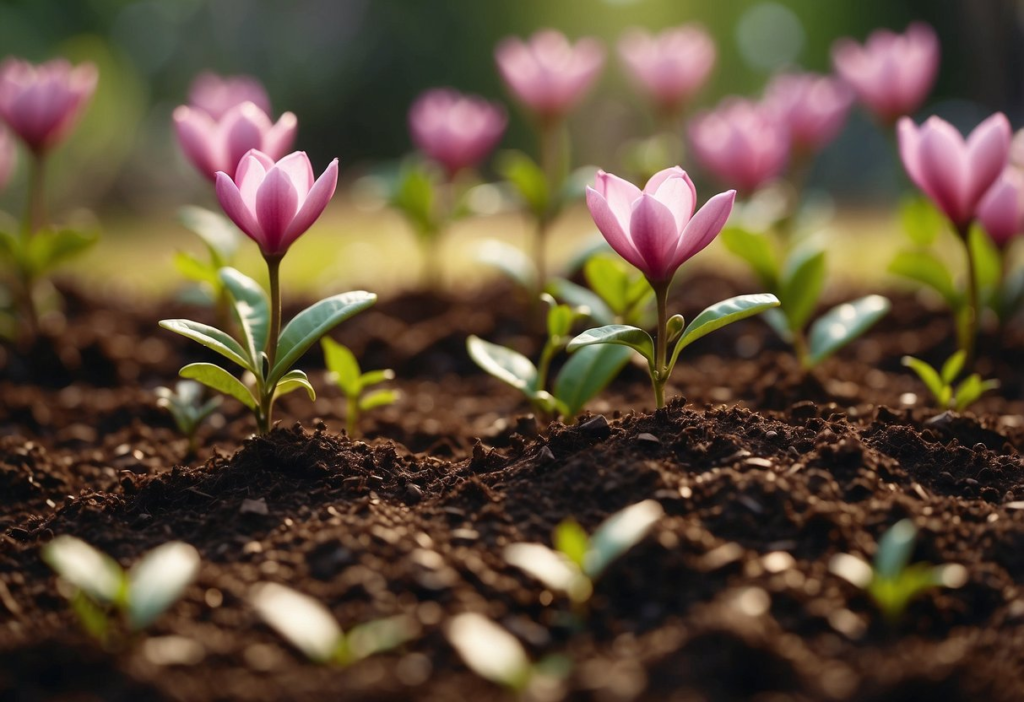
Composted manure is a valuable addition to your Little Gem Magnolia’s care routine. It acts as a slow-release fertilizer, providing consistent nourishment while maintaining soil moisture.
Apply a layer of composted manure about 2 to 3 inches thick on the soil surface around the tree. Keep it 3 to 4 inches away from the trunk to avoid potential rot.
This practice supports robust growth and helps your magnolia flourish. For more information, check out our guide on composted manure and soil amendment.
Incorporate Raised Beds
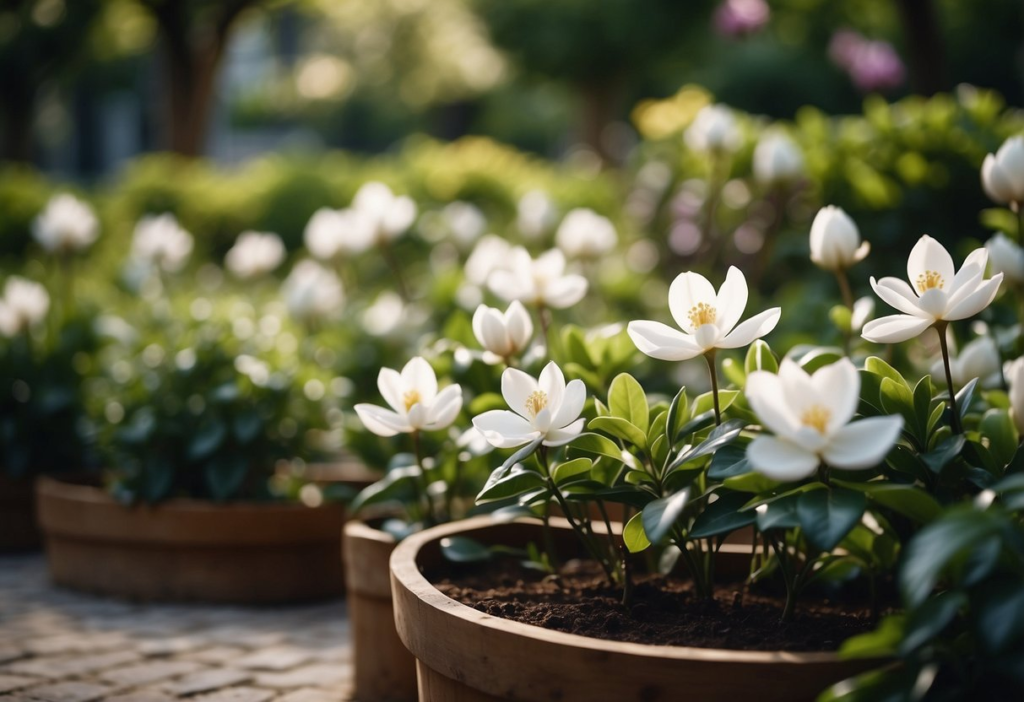
Raised beds can significantly benefit your Little Gem Magnolia by improving drainage and soil management. They create a controlled environment where soil conditions can be optimized.
Combine your magnolia with other plants like sunflowers, berries, and zinnias in the raised bed to create a dynamic and colorful garden space.
Ensure regular watering to maintain the health of all plants in the raised bed, and enjoy the vibrant blooms and improved garden aesthetics.
Design with Pathways

Incorporating pathways in your Little Gem Magnolia garden can enhance its charm and functionality. Use materials such as gravel, stepping stones, or brick to create visually appealing and practical walkways.
Pathways guide visitors through the garden, highlight different areas, and can make the space feel more expansive.
Add curves and turns to the pathways for visual interest and border them with low-growing plants or flowers to introduce additional color and texture. This simple design feature can greatly enhance the overall look of your garden.
Include Companion Plants
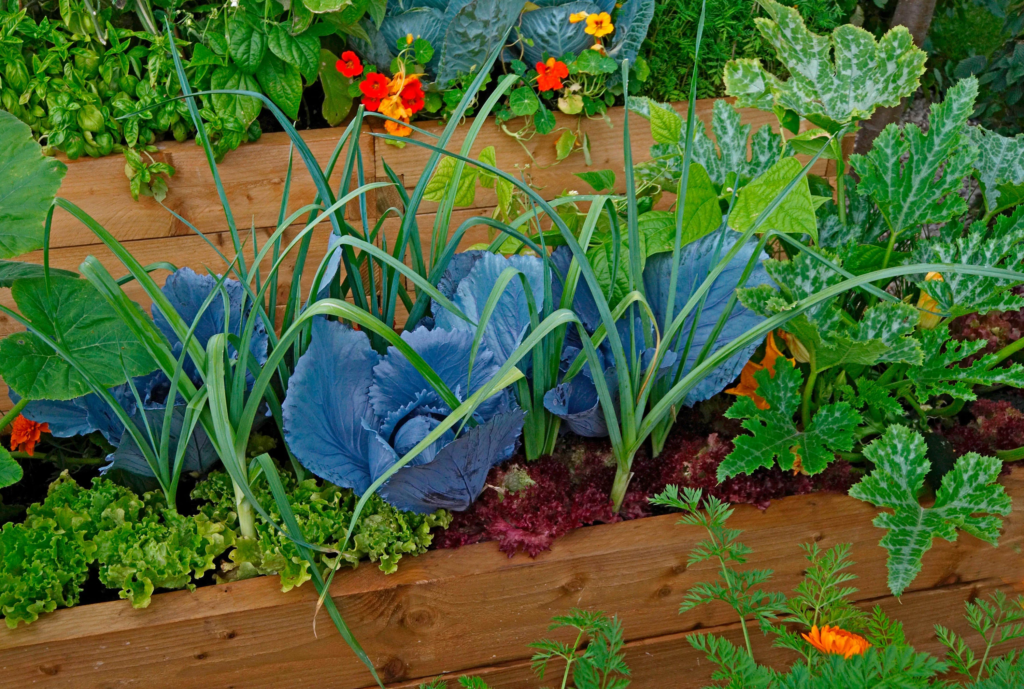
Adding companion plants to your Little Gem Magnolia garden can enhance both its beauty and health. Consider planting shade-tolerant varieties like trillium and cyclamen for lush ground cover beneath the magnolia.
In spring, daffodils such as “Ice Follies” and “Narcissus Tete-a-Tete” will provide vibrant color and cheer. Grouping bulbs together ensures a striking display throughout the seasons.
Also, include shade-loving plants like Solomon’s seal and wild ginger to add variety and keep your garden lively all year round.
Decorate with Garden Lights

Illuminate your Little Gem Magnolia garden with decorative garden lights for a magical evening ambiance. Use small solar lights to highlight the base of the trees and create a soft, inviting glow.
Wrap string lights around the branches for a warm, enchanting effect. Spotlights can be placed to accentuate the magnolia’s beautiful shape and glossy leaves.
These lighting options enhance your garden’s appeal after dark, making it a perfect space for evening enjoyment.
Create a Focal Point

A Little Gem Magnolia can easily become the centerpiece of your garden. This tree, reaching up to 20 feet tall, features stunning, fragrant white flowers that bloom in the summer.
Plant it in a raised bed to improve drainage and draw attention to its beauty. Surround the tree with colorful companions like lavender and rosemary to add variety and charm to the garden.
Characteristics Of Little Gem Magnolia
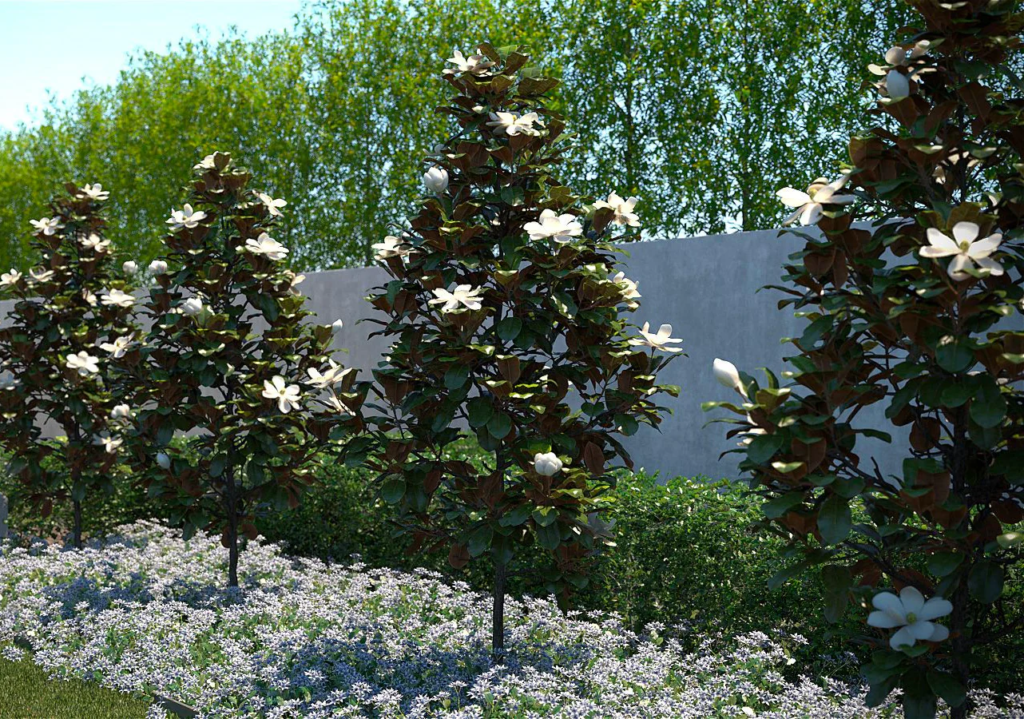
Size And Growth Rate
The Little Gem Magnolia is a compact, evergreen tree ideal for smaller gardens. It reaches around 20 to 25 feet in height and spreads 10 to 15 feet wide. As a slow-growing tree, it takes about 20 years to achieve its full height, making it suitable for confined spaces.
Leaf And Flower Description
The leaves of the Little Gem Magnolia are glossy dark green on top with a bronze-brown underside, creating a striking contrast. The tree produces large, fragrant white flowers that are about 4 inches across, blooming from late spring through mid-summer. The blooms are typically found at the tips of the branches, adding a focal point of beauty to the tree.
Planting And Care Tips

Optimal Soil Conditions
Little Gem Magnolias prefer well-draining soil rich in organic matter. Adding compost can improve soil structure and nutrients. Aim for a slightly acidic to neutral pH range, from 5.5 to 7.0.
Avoid heavy clay soils that retain excess moisture, as this can lead to root rot. If dealing with heavy soil, consider planting on a raised mound to enhance drainage. Mulch around the base to maintain moisture and suppress weeds.
Watering Requirements
Maintain consistent soil moisture for Little Gem Magnolias, especially during the first year. Water deeply once a week, particularly in hot weather, using a soaker hose or drip irrigation.
Mature trees are more drought-tolerant but benefit from regular watering during dry periods. Water early in the morning to minimize evaporation and avoid watering the leaves to prevent fungal issues.
Adjust your watering based on rainfall and temperature to keep your Little Gem Magnolia healthy and vibrant.
